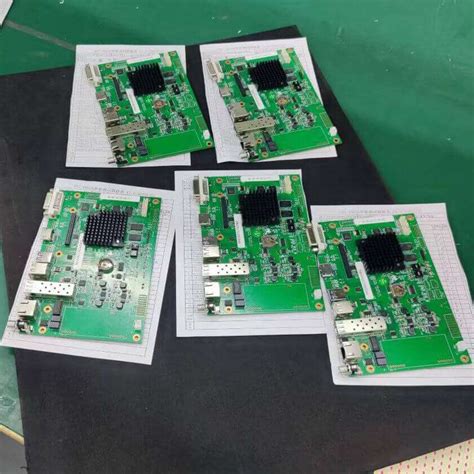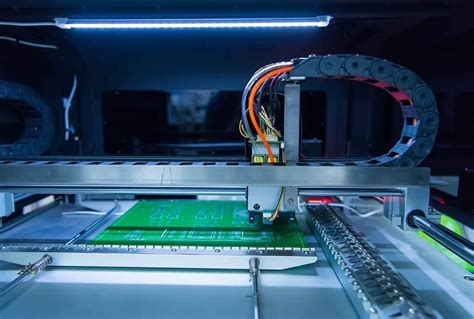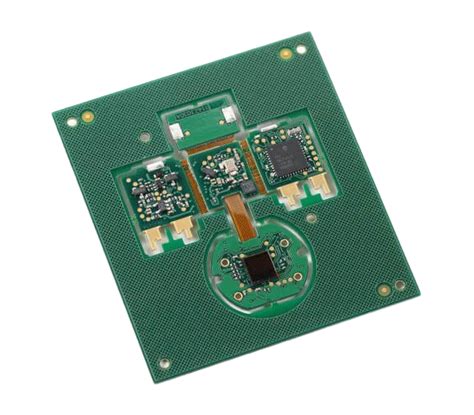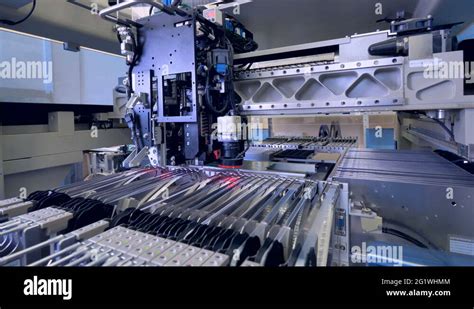Aluminum core pcb material
Advantages Of Using Aluminum Core PCB Material In Electronics
Aluminum core printed circuit boards (PCBs) have emerged as a significant innovation in the electronics industry, offering a range of advantages that make them an attractive choice for various applications. One of the primary benefits of using aluminum core PCB material is its superior thermal conductivity. Unlike traditional fiberglass PCBs, aluminum core PCBs can efficiently dissipate heat, which is crucial for high-power applications. This enhanced thermal management helps in maintaining the performance and longevity of electronic components, thereby reducing the risk of overheating and subsequent failure.
In addition to thermal conductivity, aluminum core PCBs are known for their mechanical durability.
The aluminum substrate provides a robust foundation that can withstand physical stress and environmental factors better than conventional materials. This makes aluminum core PCBs particularly suitable for applications in harsh environments, such as automotive and industrial electronics, where reliability and durability are paramount. Furthermore, the rigidity of aluminum core PCBs ensures that they maintain their structural integrity even under extreme conditions, thereby enhancing the overall reliability of the electronic device.
Another notable advantage of aluminum core PCB material is its lightweight nature.
Despite its strength and durability, aluminum is a relatively light metal, which contributes to the overall reduction in the weight of electronic devices. This is particularly beneficial in applications where weight is a critical factor, such as in aerospace and portable consumer electronics. The combination of strength and lightness makes aluminum core PCBs an ideal choice for designers looking to optimize both performance and portability.
Moreover, aluminum core PCBs offer excellent electrical insulation properties.
The dielectric layer between the aluminum core and the copper circuitry ensures that there is no electrical interference, which is essential for maintaining signal integrity. This is particularly important in high-frequency applications where even minor electrical interference can lead to significant performance degradation. By providing a stable and interference-free platform, aluminum core PCBs help in achieving higher levels of precision and efficiency in electronic circuits.
In terms of cost-effectiveness, aluminum core PCBs present a compelling case.
While the initial material cost may be higher compared to traditional PCBs, the long-term benefits in terms of durability, thermal management, and reliability often result in lower overall costs. Reduced failure rates and extended lifespans mean fewer replacements and repairs, which can lead to significant savings over time. Additionally, the manufacturing process for aluminum core PCBs has become more streamlined and efficient, further reducing production costs and making them more accessible for a wide range of applications.
Furthermore, the environmental impact of aluminum core PCBs is relatively lower compared to other materials.
Aluminum is a recyclable material, and its use in PCBs contributes to the sustainability efforts within the electronics industry. By opting for aluminum core PCBs, manufacturers can reduce their carbon footprint and promote eco-friendly practices, which is increasingly important in today’s environmentally conscious market.
In conclusion, the advantages of using aluminum core PCB material in electronics are manifold. From superior thermal conductivity and mechanical durability to lightweight properties and excellent electrical insulation, aluminum core PCBs offer a robust and reliable solution for a variety of applications. Their cost-effectiveness and environmental benefits further enhance their appeal, making them a preferred choice for modern electronic designs. As the demand for high-performance and sustainable electronic devices continues to grow, the adoption of aluminum core PCBs is likely to increase, driving innovation and efficiency in the industry.

Thermal Management Benefits Of Aluminum Core PCBs
Aluminum core printed circuit boards (PCBs) have emerged as a pivotal innovation in the realm of electronics, particularly in applications where thermal management is paramount. The unique properties of aluminum core PCBs make them an ideal choice for high-power and high-temperature environments, offering a range of thermal management benefits that are difficult to achieve with traditional PCB materials.
One of the primary advantages of aluminum core PCBs is their superior heat dissipation capabilities.
Unlike conventional PCBs, which often rely on additional heat sinks or cooling mechanisms, aluminum core PCBs integrate a metal substrate that efficiently conducts heat away from critical components. This inherent thermal conductivity ensures that heat generated by electronic components is rapidly transferred to the aluminum core, thereby reducing the risk of overheating and enhancing the overall reliability of the device.
Moreover, the thermal management benefits of aluminum core PCBs extend beyond mere heat dissipation.
The aluminum substrate also contributes to a more uniform temperature distribution across the board. This uniformity is crucial in preventing localized hotspots, which can lead to component failure and reduced lifespan of the electronic device. By maintaining a consistent temperature, aluminum core PCBs help in preserving the integrity and performance of sensitive components, thereby ensuring long-term operational stability.
In addition to their thermal advantages, aluminum core PCBs offer mechanical robustness that is particularly beneficial in demanding applications.
The metal core provides structural support, making the PCB more resistant to mechanical stress and vibration. This durability is especially valuable in automotive, aerospace, and industrial applications, where electronic devices are often subjected to harsh operating conditions. The combination of thermal efficiency and mechanical strength makes aluminum core PCBs a reliable choice for environments where both heat and physical stress are prevalent.
Furthermore, the use of aluminum core PCBs can lead to cost savings in the long run.
By effectively managing heat, these PCBs reduce the need for additional cooling solutions, such as fans or heat sinks, which can add to the overall cost and complexity of the electronic system. The streamlined thermal management provided by aluminum core PCBs simplifies the design process and can result in more compact and lightweight devices. This reduction in ancillary cooling components not only lowers manufacturing costs but also enhances the energy efficiency of the final product.
Another noteworthy benefit of aluminum core PCBs is their environmental impact. Aluminum is a recyclable material, and the use of aluminum core PCBs aligns with sustainable manufacturing practices. As industries increasingly prioritize eco-friendly solutions, the recyclability of aluminum core PCBs offers an added advantage, contributing to the reduction of electronic waste and promoting a circular economy.
In conclusion, the thermal management benefits of aluminum core PCBs are multifaceted, encompassing superior heat dissipation, uniform temperature distribution, mechanical robustness, cost efficiency, and environmental sustainability. These attributes make aluminum core PCBs an indispensable component in high-power and high-temperature applications, ensuring the reliability, longevity, and efficiency of electronic devices. As technology continues to advance and the demand for high-performance electronics grows, the role of aluminum core PCBs in effective thermal management will undoubtedly become even more critical.
Comparing Aluminum Core PCBs To Traditional FR4 PCBs
When it comes to printed circuit boards (PCBs), the choice of material can significantly impact the performance, durability, and efficiency of the final product.
Among the various materials available, aluminum core PCBs and traditional FR4 PCBs are two of the most commonly used. Understanding the differences between these two materials is crucial for making an informed decision that aligns with specific application requirements.
Aluminum core PCBs, also known as metal core PCBs, are designed with a base layer of aluminum, which provides excellent thermal conductivity. This characteristic is particularly beneficial in applications where heat dissipation is critical, such as in LED lighting, power supplies, and automotive electronics. The aluminum core acts as a heat sink, efficiently drawing heat away from the components and reducing the risk of overheating. Consequently, this leads to enhanced performance and longevity of the electronic device.
In contrast, traditional FR4 PCBs are made from a woven fiberglass cloth with an epoxy resin binder that is flame resistant.
FR4 stands for “Flame Retardant 4,” indicating its ability to withstand high temperatures without catching fire. While FR4 PCBs are widely used due to their versatility and cost-effectiveness, they do not offer the same level of thermal management as aluminum core PCBs. This limitation can be a significant drawback in high-power applications where excessive heat can compromise the functionality and reliability of the device.
Moreover, the mechanical properties of aluminum core PCBs provide additional advantages.
The aluminum base offers superior rigidity and strength, making these PCBs less prone to warping and mechanical stress. This robustness is particularly advantageous in environments subject to vibration and mechanical shock, such as in automotive and industrial applications. On the other hand, FR4 PCBs, while reasonably durable, may not offer the same level of mechanical resilience, potentially leading to issues in demanding conditions.
Another critical aspect to consider is the electrical performance.
Aluminum core PCBs typically exhibit lower electrical resistance due to the conductive properties of aluminum. This can result in improved signal integrity and reduced power loss, which is essential for high-frequency applications. Conversely, FR4 PCBs, with their non-conductive fiberglass base, may not provide the same level of electrical performance, especially in applications requiring high-speed signal transmission.
Despite these advantages, aluminum core PCBs are generally more expensive than their FR4 counterparts.
The cost of raw materials and the complexity of the manufacturing process contribute to the higher price point. For applications where budget constraints are a primary concern, FR4 PCBs may be the more economical choice. However, it is essential to weigh the initial cost against the potential long-term benefits of improved thermal management, mechanical strength, and electrical performance offered by aluminum core PCBs.
In conclusion, the decision between aluminum core PCBs and traditional FR4 PCBs should be guided by the specific requirements of the application. While aluminum core PCBs provide superior thermal management, mechanical strength, and electrical performance, they come at a higher cost. FR4 PCBs, on the other hand, offer versatility and cost-effectiveness but may fall short in high-power and high-frequency applications. By carefully considering these factors, designers and engineers can select the most appropriate PCB material to ensure optimal performance and reliability of their electronic devices.

Applications Of Aluminum Core PCBs In LED Lighting Systems
Aluminum core printed circuit boards (PCBs) have become increasingly significant in the realm of LED lighting systems, offering a range of benefits that enhance performance and reliability. These PCBs are specifically designed to manage heat dissipation more effectively than traditional fiberglass-based boards, making them an ideal choice for high-power LED applications. As LED technology continues to evolve, the demand for efficient thermal management solutions has grown, and aluminum core PCBs have emerged as a critical component in meeting this need.
One of the primary applications of aluminum core PCBs in LED lighting systems is in street lighting.
Streetlights are exposed to various environmental conditions and must operate efficiently over long periods. The high thermal conductivity of aluminum core PCBs ensures that the heat generated by the LEDs is quickly dissipated, thereby maintaining optimal performance and extending the lifespan of the lighting system. This is particularly important in urban areas where streetlights are essential for public safety and energy efficiency.
In addition to street lighting, aluminum core PCBs are widely used in automotive lighting systems.
Modern vehicles are increasingly equipped with LED headlights, taillights, and interior lighting, all of which require effective thermal management to function reliably. The compact design of aluminum core PCBs allows for their integration into the limited space available in automotive applications, while their superior heat dissipation properties prevent overheating and potential failure of the LEDs. This not only enhances the safety and performance of the vehicle but also contributes to energy savings and reduced maintenance costs.
Furthermore, aluminum core PCBs are integral to the design of high-power LED floodlights and spotlights used in industrial and commercial settings.
These lighting systems often operate for extended periods and generate significant amounts of heat. The use of aluminum core PCBs ensures that the heat is efficiently managed, preventing thermal buildup that could compromise the performance and longevity of the LEDs. This is particularly crucial in environments where consistent and reliable lighting is necessary for productivity and safety.
Another notable application of aluminum core PCBs is in the realm of residential LED lighting. As homeowners increasingly adopt LED technology for its energy efficiency and long lifespan, the need for effective thermal management becomes apparent. Aluminum core PCBs are used in various residential lighting fixtures, including ceiling lights, wall sconces, and under-cabinet lighting. By ensuring that the LEDs operate within their optimal temperature range, these PCBs help maintain the quality and durability of the lighting system, providing homeowners with reliable and efficient illumination.
Moreover, the use of aluminum core PCBs extends to specialized LED applications such as grow lights for horticulture and aquarium lighting. These systems require precise control of light intensity and spectrum to support plant growth and aquatic life. The efficient heat dissipation provided by aluminum core PCBs ensures that the LEDs maintain their performance characteristics, delivering consistent and effective lighting for these specialized applications.
In conclusion, the applications of aluminum core PCBs in LED lighting systems are diverse and far-reaching. From street lighting and automotive applications to industrial, commercial, and residential settings, these PCBs play a crucial role in managing heat dissipation and ensuring the reliable performance of LED technology. As the demand for energy-efficient and long-lasting lighting solutions continues to grow, aluminum core PCBs will remain an essential component in the advancement of LED lighting systems.







